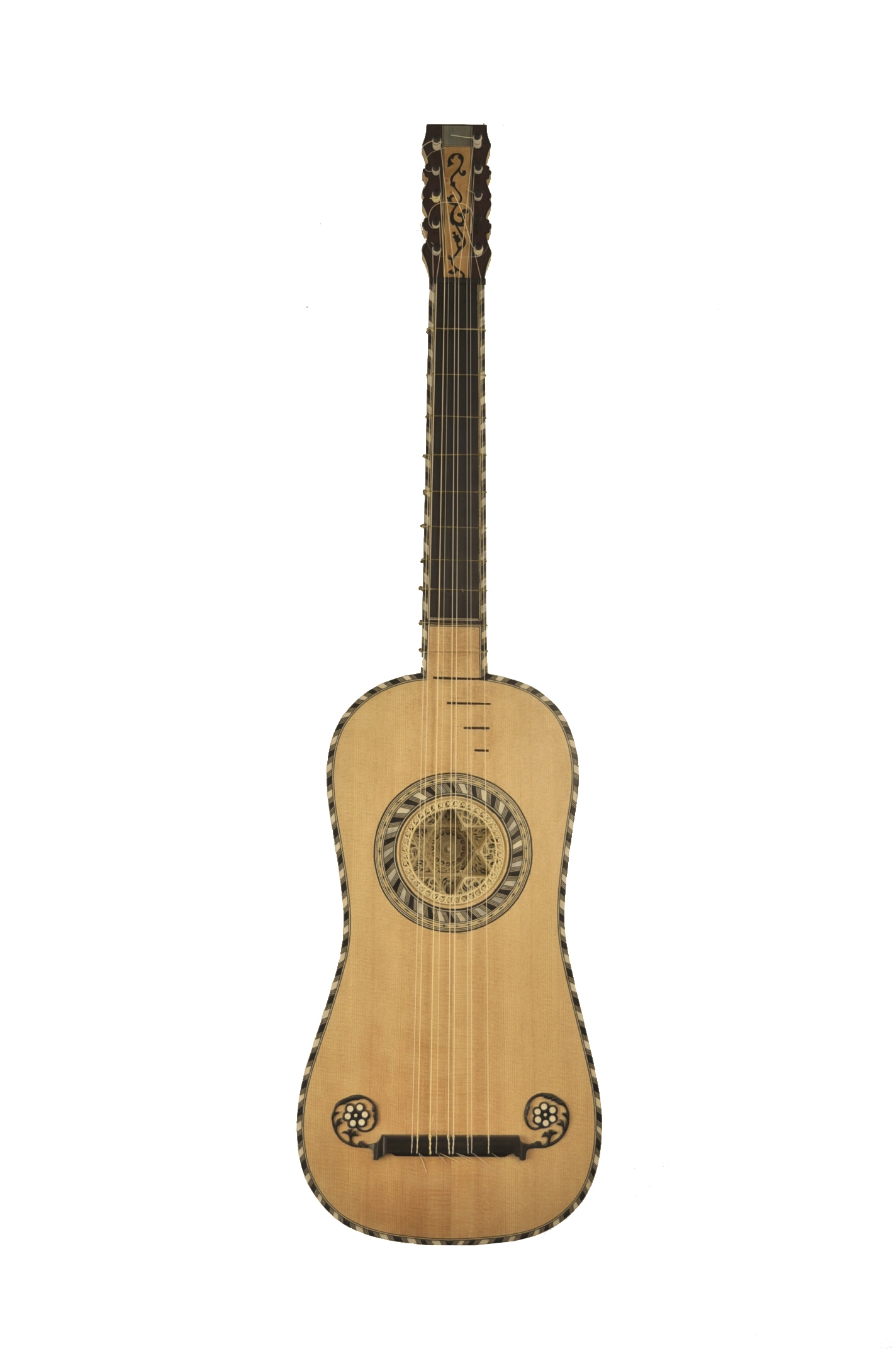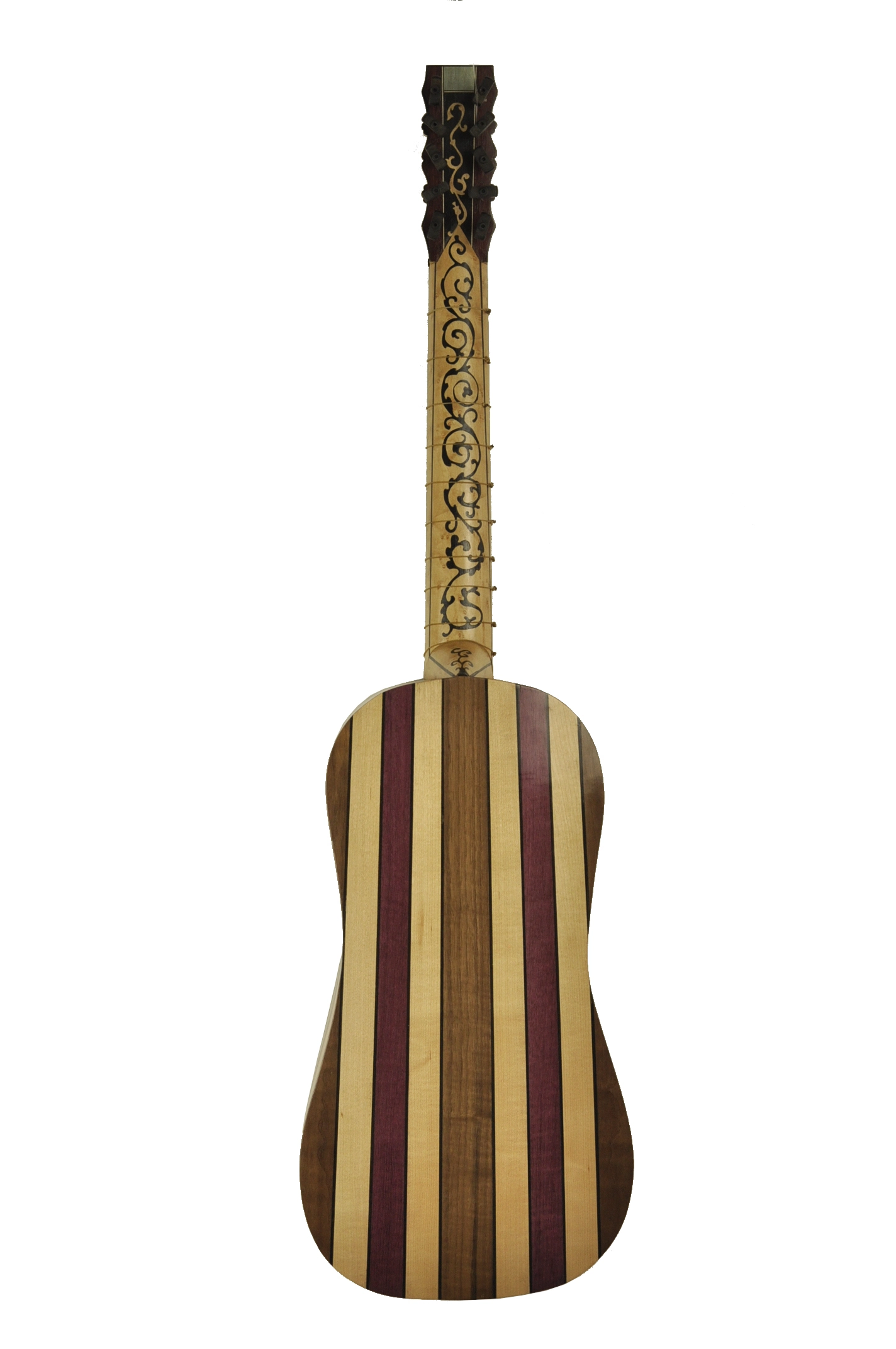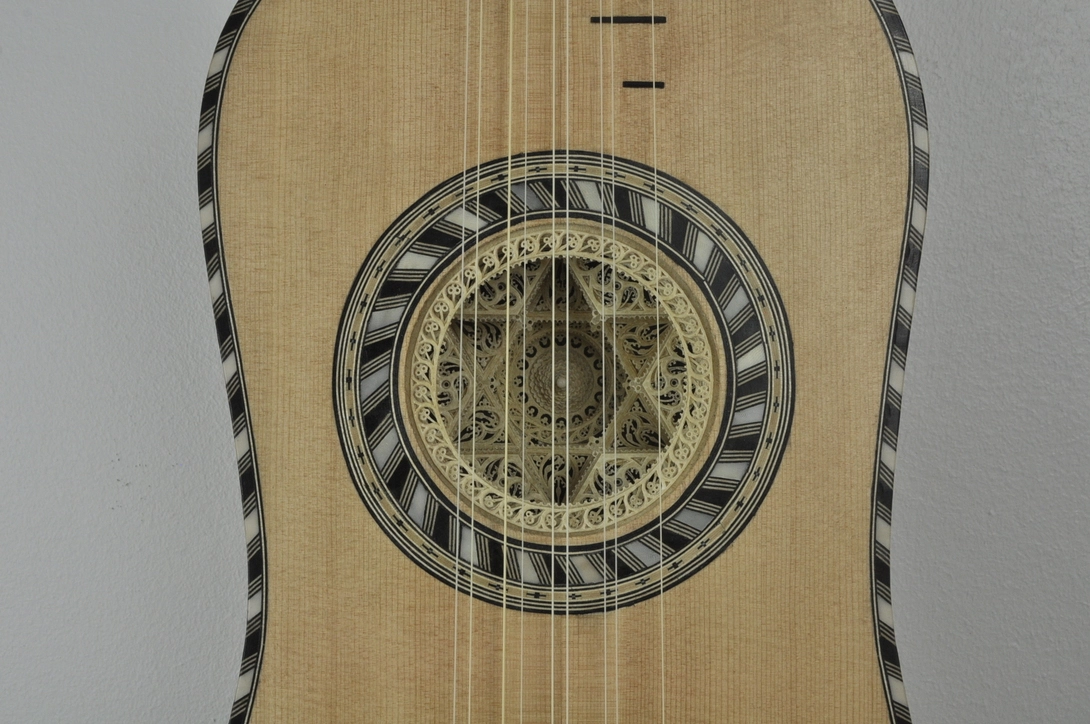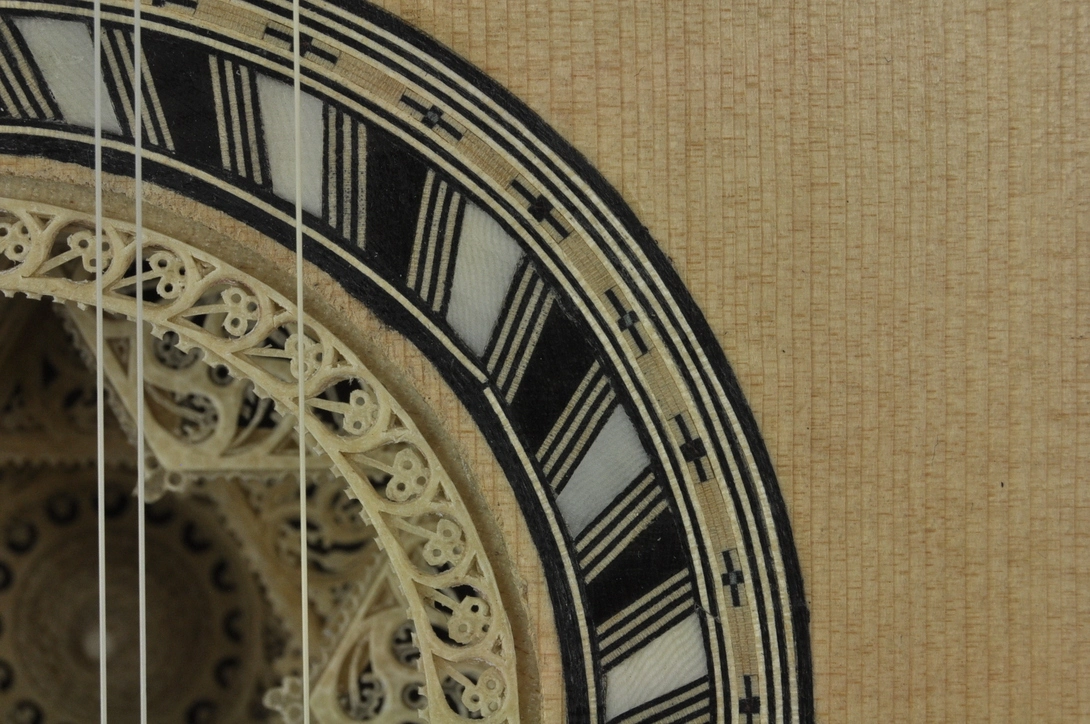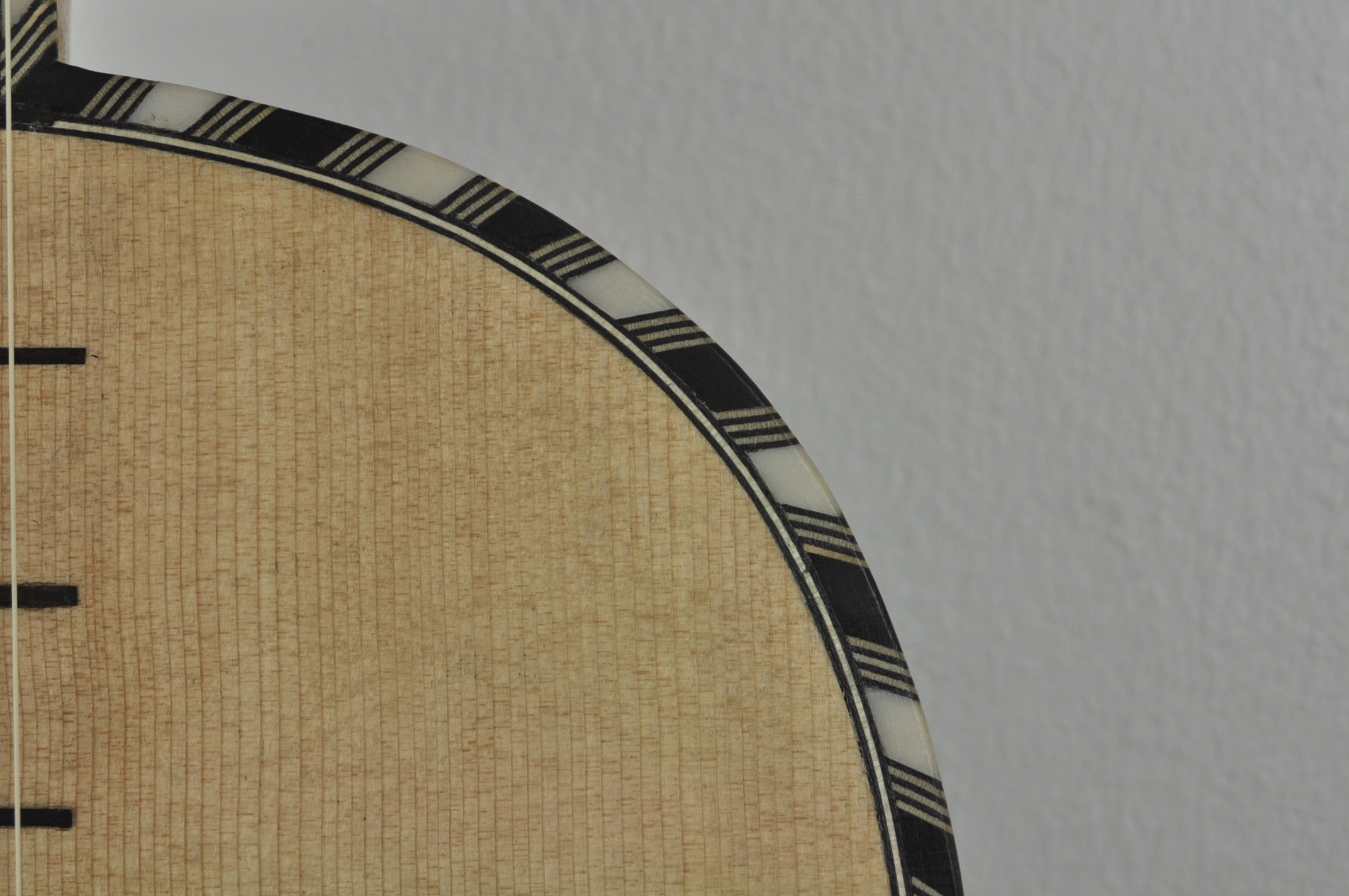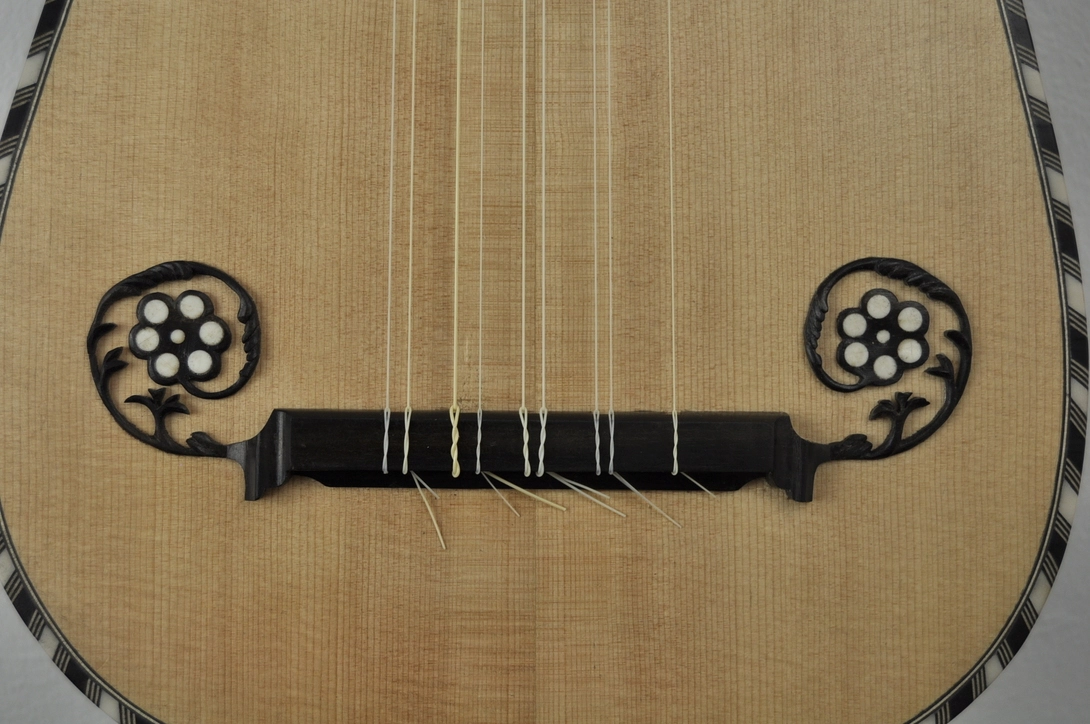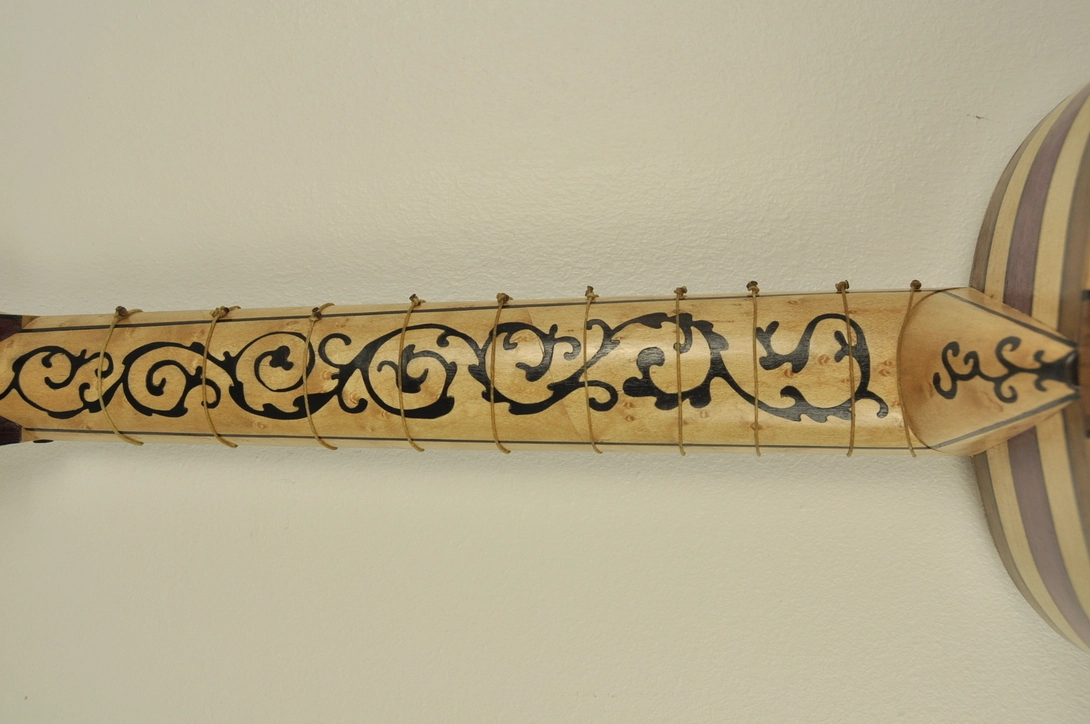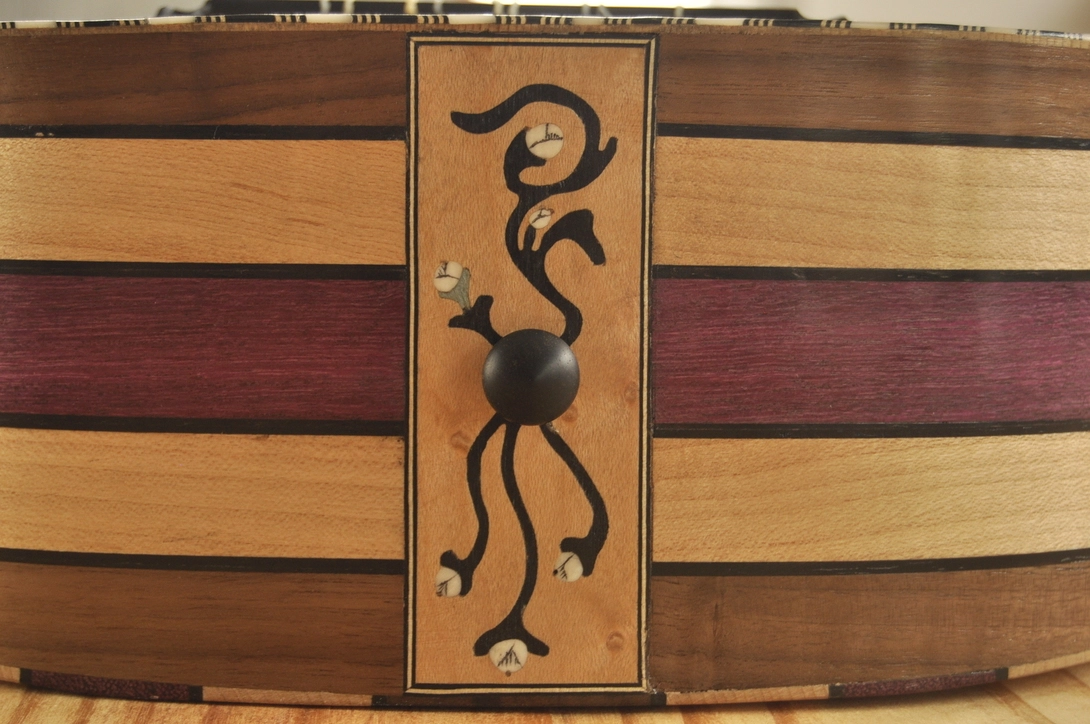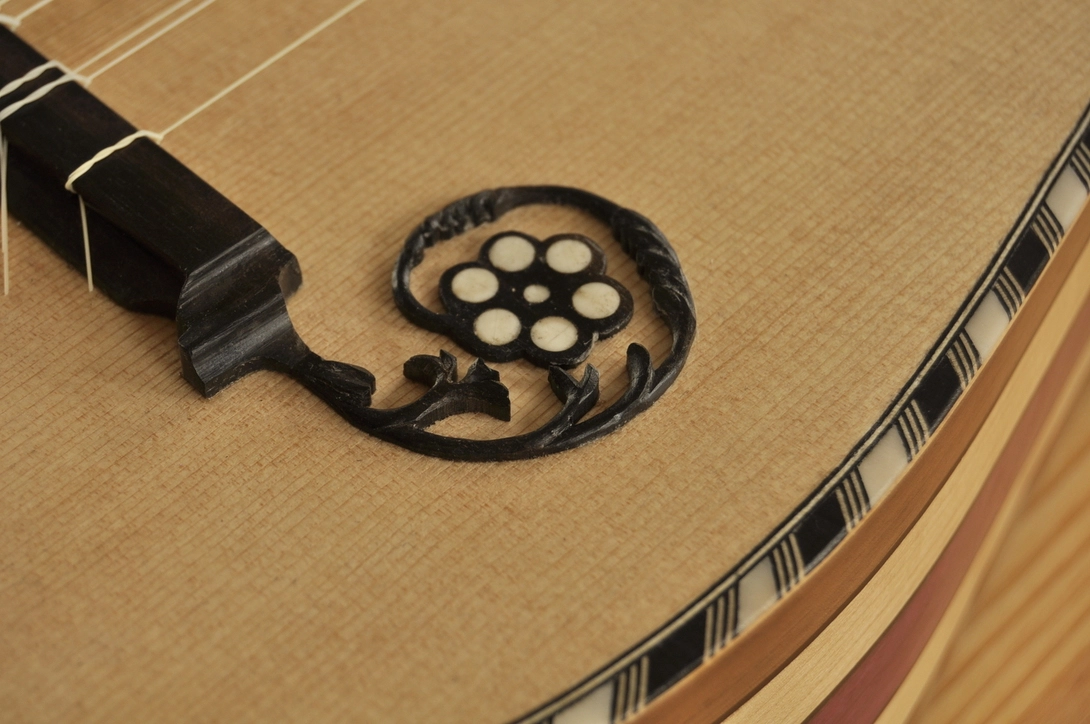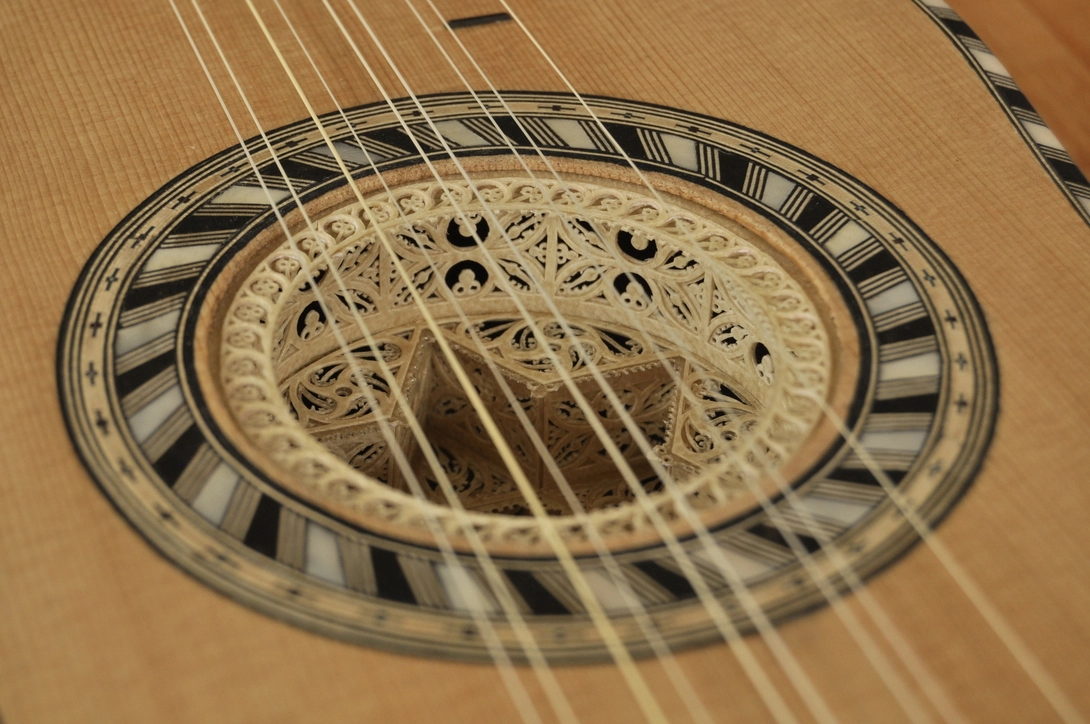The baroque guitar seems to have appeared in the mid-sixteenth century. The Spanish composer Juan Bermudo mentions a five-course guitar in his book Declaracion de Instrumentos musicales published in 1555. This instrument gradually replaced the four-course renaissance guitar and became a popular instrument until the end of the eighteenth century. The baroque guitar was played in France, Spain and Italy and adapted to the musical evolutions that abounded during this broad period that would later be called the baroque. In the middle of the eighteenth century, the instrument progressively changed, losing its double strings and gaining a sixth to evolve into the romantic guitar.
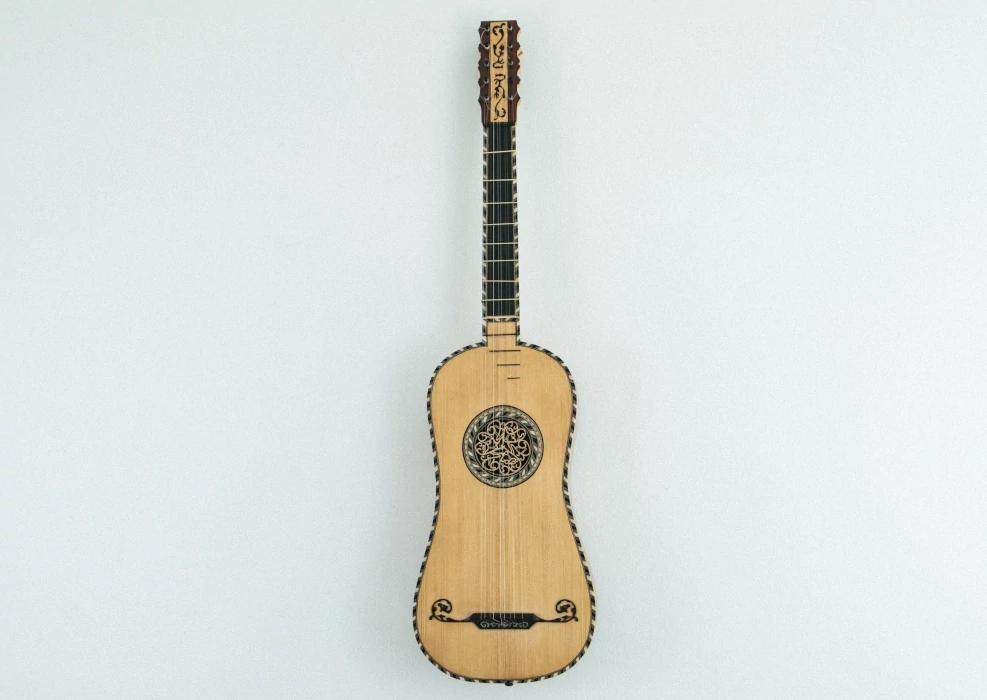
Model inspired by the baroque guitar attributed to René Voboam, dated 1641, in the Ashmolean Museum, Oxford, Hill Collection n°40.
Materials: back and sides made of maple and walnut ribs separated by an ebony fillet. Spruce soundboard. Maple neck veneered with birdseye maple and black stained maple inlays. Pegbox inlay in amaranth, birdseye maple, black stained maple with a black stained maple purfling. Decorative pistagne in ebony, vegetable ivory and white and black stained maple. Easel and whiskers in ebony. Inlaid rosette in vegetal ivory, ebony, white and black stained maple. Rosette in openwork maple and fine maple veneer stained black. Strap knob, nut and tuning pegs in ebony. Ebony tuning fork with ebony, ivory, white maple and black stained pistons.
Finish: shellac varnish on the sides, back of the body, back of the neck and pegbox. Soundboard and fingerboard waxed with microcrystalline wax.
Dimensions : 91,7 cm * 24,5 cm * 10cm
String length : 665 mm
Number of frets : 13
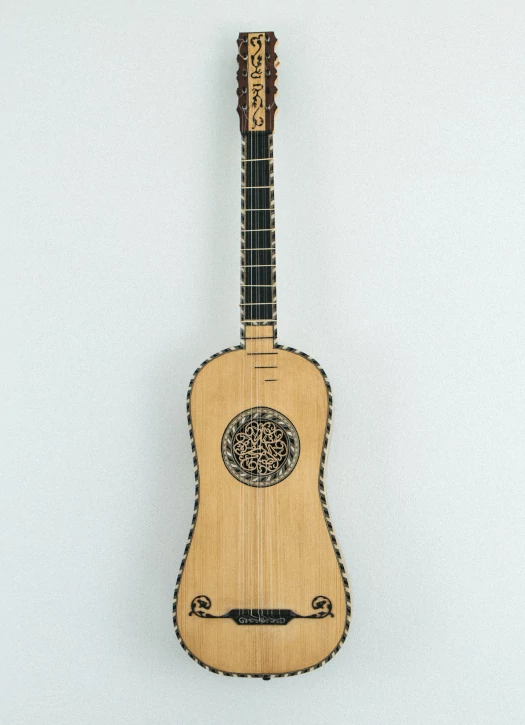
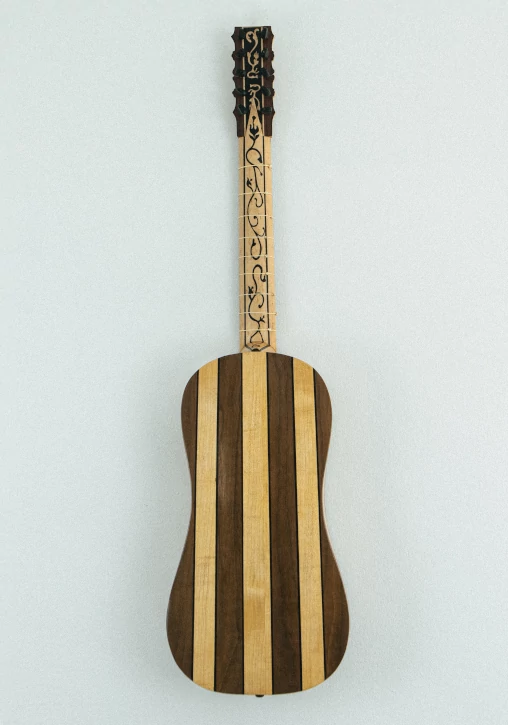
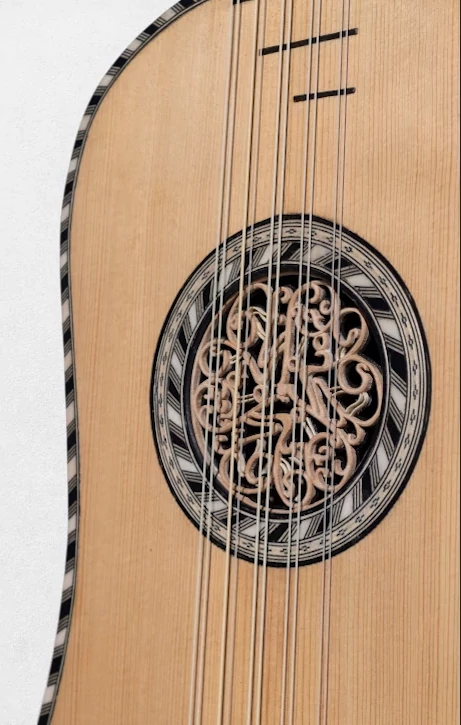
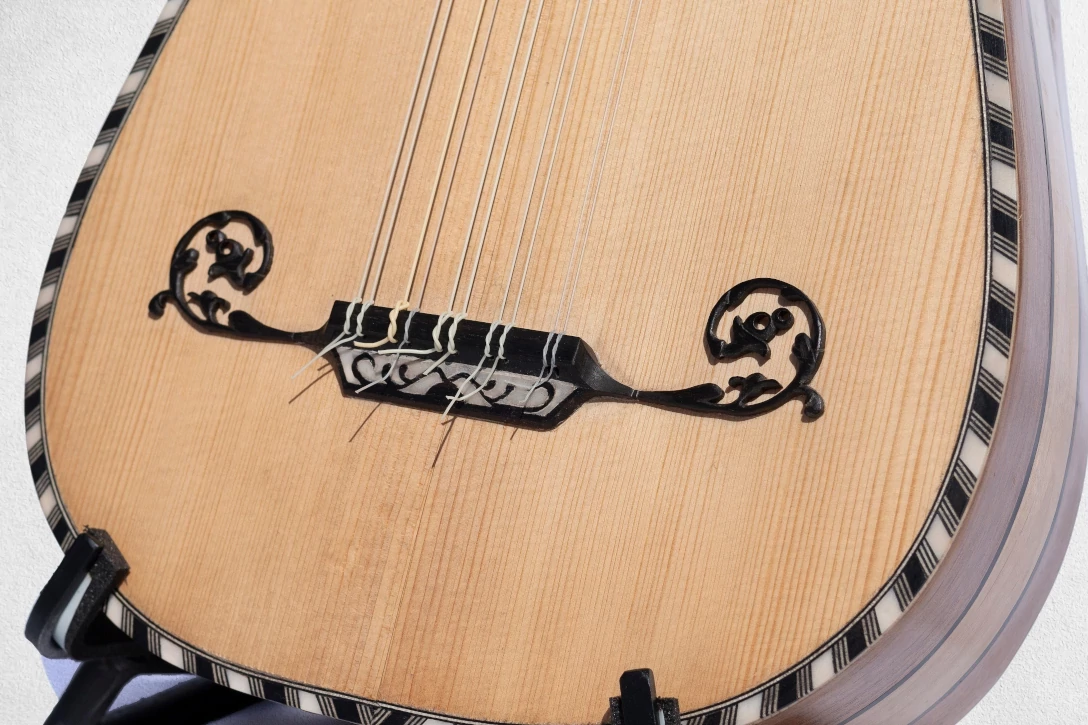
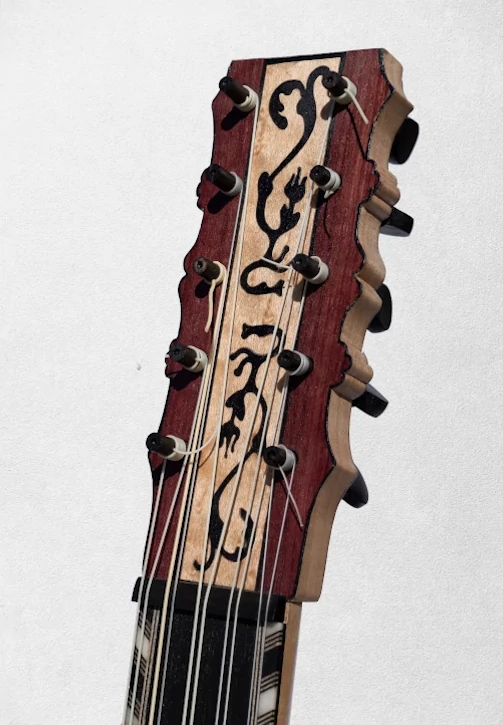
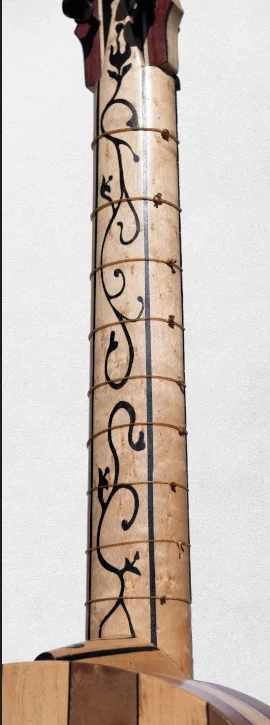
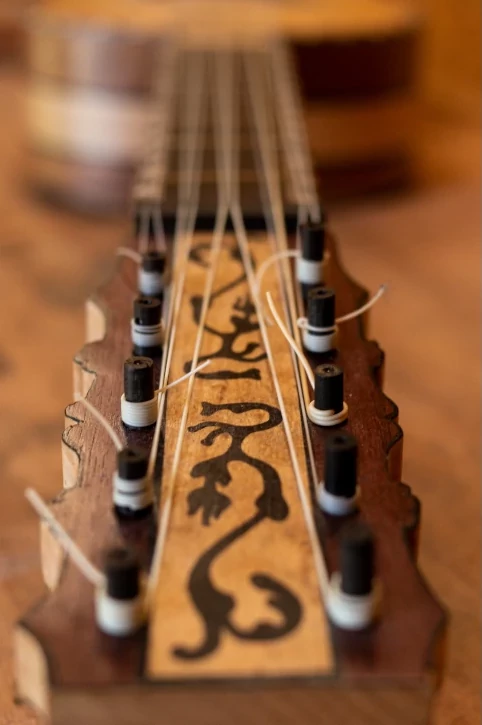
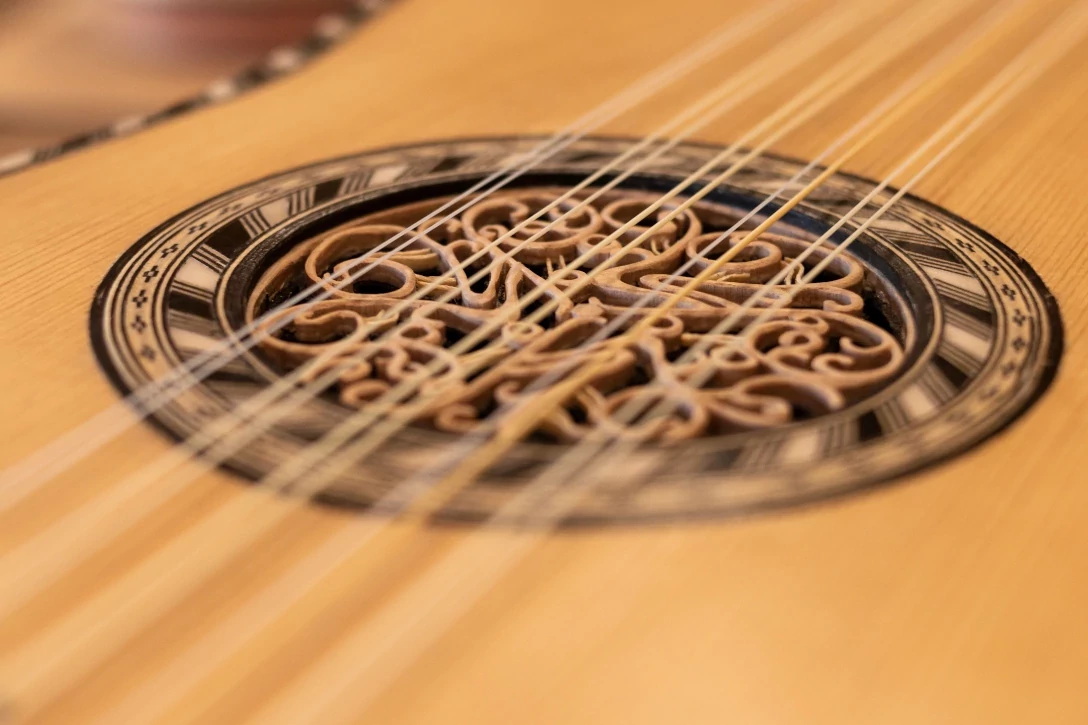
The baroque guitar seems to have appeared in the mid-sixteenth century. The Spanish composer Juan Bermudo mentions a five-course guitar in his book Declaracion de Instrumentos musicales published in 1555. This instrument gradually replaced the four-course renaissance guitar and became a popular instrument until the end of the eighteenth century. The baroque guitar was played in France, Spain and Italy and adapted to the musical evolutions that abounded during this broad period that would later be called the baroque. In the middle of the eighteenth century, the instrument progressively changed, losing its double strings and gaining a sixth to evolve into the romantic guitar.
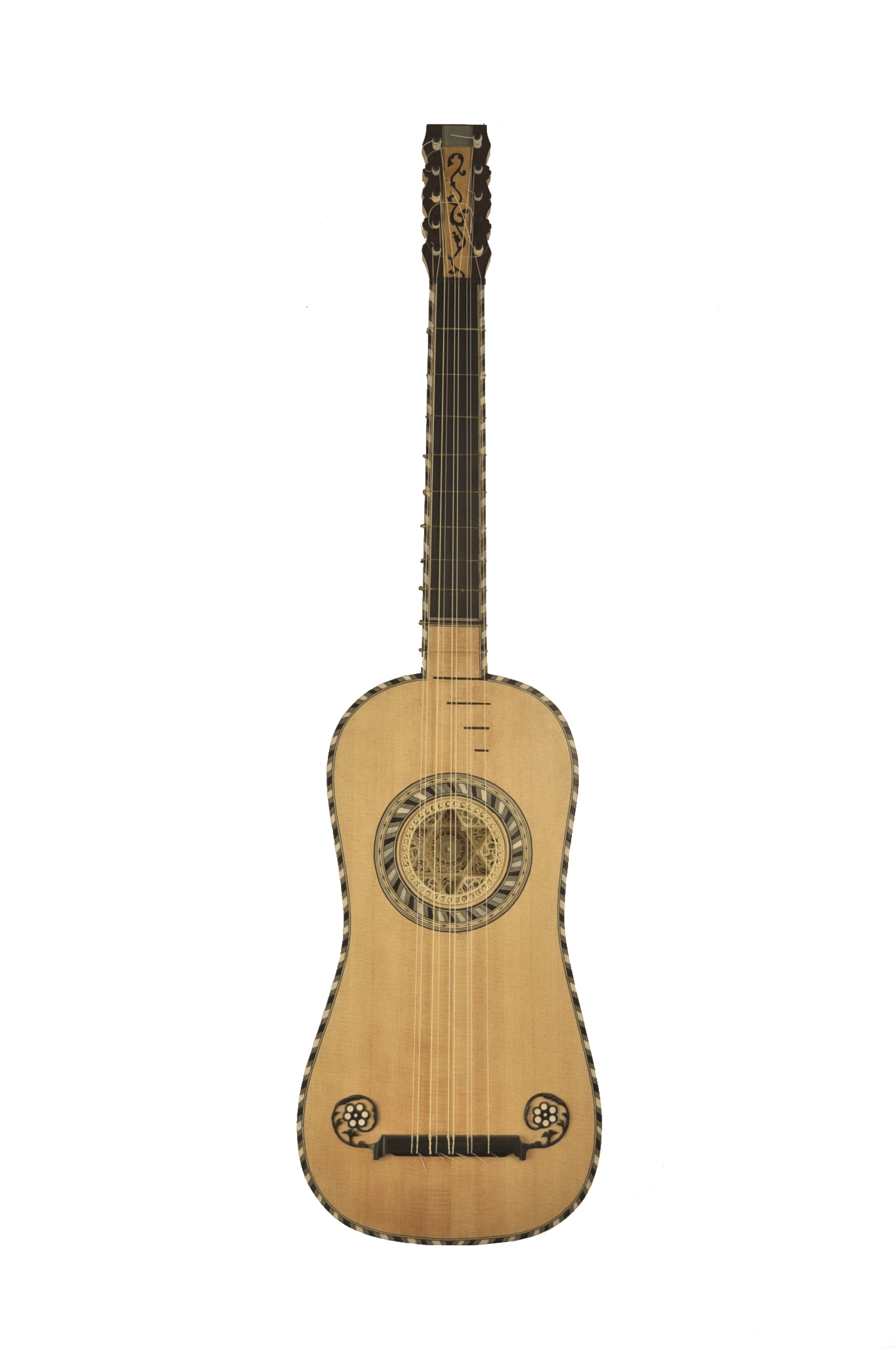
Model fantaisie inspired by the baroque guitar attributed to René Voboam, dated 1641, in the Ashmolean Museum, Oxford, Hill Collection n°40.
Materials: back and sides made of maple, walnut and amaranth ribs separated by an ebony fillet. Sitka Spruce soundboard. Maple neck veneered with birdseye maple and black stained maple inlays. Pegbox inlay in amaranth, birdseye maple, black stained maple with a black stained maple purfling. Decorative pistagne in ebony, vegetable ivory and white and black stained maple. Bridge in ebony and bone. Inlaid rosette in vegetal ivory, ebony, white and black stained maple. Rosette in parchment. Strap knob, nut and tuning pegs in ebony. Ebony tuning fork with ebony, ivory, white maple and black stained pistons.
Finish: shellac varnish on the sides, back of the body, back of the neck and pegbox. Soundboard and fingerboard waxed with microcrystalline wax.
Dimensions : 91,7 cm * 24,5 cm * 10cm
String length : 690 mm
Number of frets : 14
